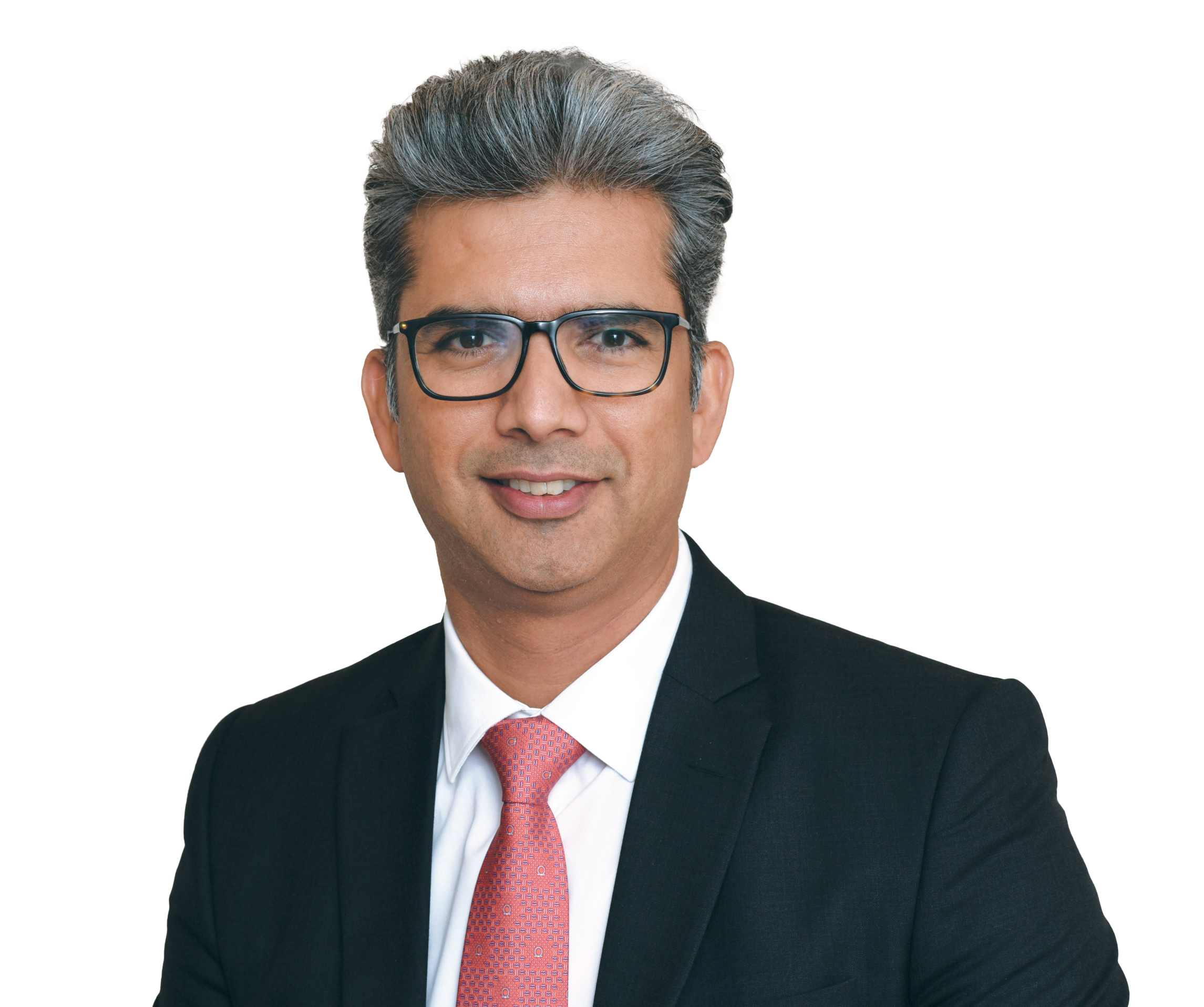
General Disclosures

Message from Our Leadership
"Our vision is to deliver winning performance by being the leader in sustainable business. We will demonstrate how our purpose-led, future-fit business model drives superior performance, delivering growth that is consistent, competitive, profitable and responsible."
Ritesh Tiwari
Executive Director, Finance & IT and Chief Financial Officer
General Disclosures Highlights

0
Employees

0
Workers

0
%
Gender Diversity - Board Level

0
%
Gender Diversity - Managerial level

0
Persons with Disabilities (PwD)

0
Women on Shopfloor

Employer of
Choice
Choice
by insideIIM.com

Best
Organization for
Women
Organization for
Women
by The Economic Times
I. Details of the listed entity
| S. No | Particulars held | Response |
|---|---|---|
| 1 | Corporate Identity Number (CIN) of the listed entity | L15140MH1933PLC002030 |
| 2 | Name of the listed entity | Hindustan Unilever Limited |
| 3 | Year of incorporation | 1933 |
| 4 | Registered office address | Unilever House, B. D. Sawant Marg, Chakala, Andheri (East), Mumbai-400099 |
| 5 | Corporate address | |
| 6 | levercare.shareholder@unilever.com; comsec.hul@unilever.com | |
| 7 | Telephone | + 91 (0) 022 - 5043 2790/32516/32754 |
| 8 | Website | www.hul.co.in |
| 9 | Financial year for which reporting is being done | 1st April, 2022 to 31st March, 2023 |
| 10 | Name of the Stock Exchange(s) where shares are listed | BSE Limited; National Stock Exchange of India Limited |
| 11 | Paid-up Capital | ₹235 crores |
| 12 | Name and contact details (telephone, email address) of the person who may be contacted in case of any queries on the BRSR report. |
Name: Dev Bajpai - Executive Director, Legal & Corporate
Affairs, and Company Secretary. Contact: + 91 (0) 022 - 5043 2790/32754 Email: levercare.shareholder@unilever.com |
| 13 | Reporting boundary-Are the disclosures under this report made on a standalone basis (i.e., only for the entity) or on a consolidated basis (i.e., for the entity and all the entities that form part of its consolidated financial statements taken together)? |
Disclosures under this report are made on a consolidated basis for
wholly owned subsidiaries (Refer table V-21. (a) for list of wholly-owned subsidiaries) |
II. Products/services
II-14. Details of business activities (accounting for 90% of the turnover):
| S. No | Description of Main Activity | Description of Business Activity | Entity turnover (%) |
|---|---|---|---|
| 1 | Manufacturing - FMCG | Soaps, Detergents, Cosmetics & Toiletries, Packaged Foods | 100.0% |
II-15. Products/Services sold by the entity (accounting for 90% of the entity's Turnover):
| S. No | Product/Service | NIC Code | Total Turnover contributed (%) |
|---|---|---|---|
| 1 | Beauty and personal care |
20231 Soaps 20236 Shampoos 20235 Toothpastes 20234 Deodorants 20237 Cosmetics 96020 Hairdressing and other beauty treatment |
36.7% |
| 2 | Home care |
20233 Detergents 27501 Water purifiers 28195 Air purifiers 20239 Surface and Bathroom Cleaners |
35.4% |
| 3 | Food and refreshments |
10791 Tea 10792 Coffee 10750 Packaged foods (including frozen desserts) 10794 Malt-based foods |
24.8% |
III. Operations
III-16. Number of locations where plants and/or operations/offices of the entity are situated:
| Location | Number of Plants | Number of Offices | Total |
|---|---|---|---|
| National | 29 | 10 | 39 |
| International | 0 | 0 | 0 |
III-17. Markets served by the entity:
a. Number of locations
| Locations | Number |
|---|---|
| National | 28 States and 8 Union Territories |
| International | 43 countries |
We have a pan-India presence and serve all States and Union Territories in India.
b. What is the
contribution of exports as a percentage of the total turnover of the
entity?
2.5%, The focus of the Fast Moving Consumer Goods (FMCG)
exports operation is two-fold: to expand global presence of brands, such as
Vaseline, Dove, Pears, BRU, Red Label, Lakme, Horlicks, and Boost, and to
effectively provide cross-border sourcing of FMCG products to other Unilever
companies across the world.
c. A brief on the types of
customers:
We have 90 years of presence in the country, and 9 out
of 10 households in India use one or more of our brands. Our brands are present in
around nine million retail outlets spread across the country through a network of
3,500+ distributors, who are the backbone of our retail reach. We work with many
retail partners to help them grow sustainably alongside us. We have a long-standing
relationship with our customers that is based on trust and mutuality of interest. We
continue to work with all our partners including small family-owned stores to large,
organised retail and e-Commerce to serve the evolving needs of our shoppers. Our
endeavour is and has always been to ensure that our brands are easily available
wherever shoppers choose to shop.
IV. Employees
IV-18. Details as of the end of the Financial Year:
a. Employees and
workers (including differently abled):
We are committed to drive
equity, diversity, and inclusion across our value chain. As on March 2023, we have
achieved 40% gender diversity across our managerial base and have a strong roadmap
to be gender-balanced at managerial level by 2025. Through several programmes, such
as 'Samavesh' and 'Ahilya', we are striving to enhance women representation in our
factories and salesforce. We have over 850 women as shopfloor employees across our
manufacturing locations and have onboarded over 1,000 women in sales.
We are
committed to including differently abled persons in our employment ecosystem and
workforce. We allow for voluntary self-disclosure and reasonable accommodation
policy to enable employees to discreetly disclose their disability and avail
support. We have set ourselves a clear objective i.e. 5% of our workforce will be
made up of differently abled people by 2025. Refer our page for more details on https://www.hul.co.in/planet-and-society/equity-diversity-and-inclusion/
| No. | Particulars | Total(A) | Male | Female | ||
|---|---|---|---|---|---|---|
| No. (B) | % (B/A) | No. (C) | % (C/A) | |||
| Employees | ||||||
| 1 | Permanent (D) | 7,719 | 5,700 | 73.8% | 2,019 | 26.2%* |
| 2 | Other than permanent (E) | 311 | 190 | 61.1% | 121 | 38.9% |
| 3 | Total employees (D + E) | 8,030 | 5,890 | 73.4% | 2,140 | 26.6% |
| Workers | ||||||
| 4 | Permanent (F) | 11,251 | 10,900 | 96.9% | 351 | 3.1% |
| 5 | Other than permanent (G) | 8,856 | 8,306 | 93.8% | 550 | 6.2% |
| 6 | Total workers (F + G) | 20,107 | 19,206 | 95.5% | 901 | 4.5% |
*As on March 2023, we have achieved a gender diversity of 40% across our managerial base.
IV-18. Details as of the end of the Financial Year:
b. Differently abled Employees and workers:
| No. | Particulars | Total(A) | Male | Female | ||
|---|---|---|---|---|---|---|
| No. (B) | % (B/A) | No. (C) | % (C/A) | |||
| Differently Abled Employees | ||||||
| 1 | Permanent (D) | 60 | 55 | 91.7% | 5 | 8.3% |
| 2 | Other than permanent (E) | - | - | 0.0% | - | 0.0% |
| 3 | Total differently abled employees (D + E) | 60 | 55 | 91.7% | 5 | 8.3% |
| Differently Abled Workers | ||||||
| 4 | Permanent (F) | 13 | 13 | 100.0% | - | 0.0% |
| 5 | Other than permanent (G) | 5 | 4 | 80.0% | 1 | 20.0% |
| 6 | Total differently abled workers (F + G) | 18 | 17 | 94.4% | 1 | 5.6% |
IV-19. Participation/Inclusion/Representation of women
| Total(A) | No. and percentage of females | ||
|---|---|---|---|
| No. (B) | % (B/A) | ||
| Board of Directors (BoD) | 10 | 2 | 20.0% |
| Key Management Personnel (KMP)* | 3 | - | 0.0% |
Above table represents
HUL's Board of Directors and Key Management Personnel
* All KMPs i.e.
Managing Director & Chief Executive Officer, Executive Director - Finance, IT
& Chief Financial Officer and Executive Director - Legal & Corporate Affairs
and Company Secretary are part of Board of Directors
IV-20. Turnover rate for permanent employees and workers
We are known for attracting and developing the best talent in the industry and HUL is often referred to as the leadership factory. Recognised as one of the best companies to work for, we continue to be the 'No. 1 Employer of Choice across sectors, based on brand perception study by InsideIIM at target B-Schools in 2022' and 'One of the Best Organisations for Women in 2022 and 2023' by Economic Times.
| FY 2022-23 (Turnover rate %) |
FY 2021-22 (Turnover rate %) |
FY 2020-21 (Turnover rate %) |
|||||||
|---|---|---|---|---|---|---|---|---|---|
| Male | Female | Total | Male | Female | Total | Male | Female | Total | |
| Permanent Employees | 17.7% | 25.3% | 19.6%* | 17.3% | 21.9% | 18.3% | 8.0% | 16.5% | 9.9% |
| Permanent workers | 7.9% | 11.1% | 8.0%** | 3.7% | 2.0% | 3.7% | 3.4% | 2.3% | 3.4% |
Turnover rate includes
voluntary and involuntary attrition
* Voluntary: 16.7%; Involuntary: 2.9%
**
Voluntary: 0.5%; Involuntary: 7.5%
V. Holding, Subsidiary and Associate Companies (INCLUDING JOINT VENTURES)
V-21. (a) Names of Holding, Subsidiary, Associate Companies, and Joint Ventures
| S. No. | Name (A) | Type of holding/subsidiary/ associate/joint venture | % of shares held by the listed entity | Does the entity indicated at column A, participate in the business responsibility initiatives of the listed entity? |
|---|---|---|---|---|
| 1 | Unilever PLC | Holding | - | No |
| 2 | Unilever Group Limited | Holding | - | No |
| 3 | Unilever Overseas Holdings AG | Holding | - | No |
| 4 | Unilever UK & CN Holdings Limited | Holding | - | No |
| 5 | Unilever South India Estates Limited | Holding | - | No |
| 6 | Unilever Assam Estates Limited | Holding | - | No |
| 7 | Unilever Overseas Holdings B V | Holding | - | No |
| 8 | Unilever India Exports Limited | Wholly-owned subsidiary | 100.0% | Yes |
| 9 | Pond's Exports Limited | Wholly-owned subsidiary | 90.0% | Yes |
| 10 | Lakme Lever Private Limited | Wholly-owned subsidiary | 100.0% | Yes |
| 11 | Unilever Nepal Limited | Subsidiary | 80.0% | Yes |
| 12 | Daverashola Estates Private Limited | Wholly-owned subsidiary | 100.0% | Yes |
| 13 | Jamnagar Properties Private Limited | Wholly-owned subsidiary | 100.0% | Yes |
| 14 | Levers Associated Trust Limited | Wholly-owned subsidiary | 100.0% | Yes |
| 15 | Levindra Trust Limited | Wholly-owned subsidiary | 100.0% | Yes |
| 16 | Hindlever Trust Limited | Wholly-owned subsidiary | 100.0% | Yes |
| 17 | Hindustan Unilever Foundation | Wholly-owned subsidiary | 76.0% | Yes |
| 18 | Bhavishya Alliance Child Nutrition Initiatives | Wholly-owned subsidiary | 100.0% | Yes |
| 19 | Unilever India Limited | Wholly-owned subsidiary | 100.0% | Yes |
| 20 | Zywie Ventures Private Limited | Subsidiary | 51.0%* | No |
| 21 | Nutritionalab Private Limited | Joint Venture | 19.8%* | No |
* On a fully diluted basis
VI. CSR Details
VI-22. (i). Is
CSR
applicable as per Section 135 of the Companies Act, 2013
(Yes/No)?
Yes, CSR provisions are applicable as per Section 135
of
the Companies Act, 2013. A belief that sustainable business drives superior
performance lies at the heart of our business strategy. We have been undertaking
CSR
activities long before it was introduced by regulations. We have a dedicated CSR
Policy focussed on People and Planet, which lays down the approach towards
community
development in the areas of water conservation, health and hygiene, skill
development, education, social advancement, gender equality, empowerment of
women,
ensuring environmental sustainability and rural development projects. The CSR
Policy, as approved by the Board of Directors, is available on our website at https://www.hul.co.in/investor-relations/corporate-social-responsibility/
VI-22. (ii).
Turnover (in crores) : ₹ 59,144
crores
VI-22. (iii). Net worth (in crores) :
₹ 50,221 crores
VII. Transparency and Disclosures Compliances
VII-23. Complaints/Grievances on any of the principles Principles (one to nine) under the National Guidelines on Responsible Business Conduct:
| Stakeholder group from whom complaint was received | Grievance redressal mechanism in place? (If yes, provide web-link for the grievance redressal policy) | FY 2022-23 | FY 2021-22 | ||||
|---|---|---|---|---|---|---|---|
| No. of complaints filed during the year | No. of complaints pending resolution at close of the year | Remarks | No. of complaints filed during the year | No. of complaints pending resolution at close of the year | Remarks | ||
| Communities |
Yes https://app.convercent.com/en-us/LandingPage/99b958aa-55a1-e611-80d3-000d3ab1117e and manual registers at factories |
- | - | - | - | - | - |
| Investors (other than shareholders) | Not applicable, as we do not have any investors other than the shareholders (e.g., preference shareholders or debenture holders) | ||||||
| Shareholders |
Yes https://www.hul.co.in/investor-relations/investor-contacts/ |
186 | 6 | Refer note below** | 166 | 1 | An interim reply was filed |
| Employees and workers |
Yes https://app.convercent.com/en-us/LandingPage/99b958aa-55a1-e611-80d3-000d3ab1117e and manual registers at factories |
79 | 12 | - | 53 | 13 | - |
| Customers* |
Yes https://www.hul.co.in/contact/ |
3,411 | 100 | - | 1,971 | 185 | - |
| Value chain partners* |
Yes https://app.convercent.com/en-us/LandingPage/99b958aa-55a1-e611-80d3-000d3ab1117e |
2 | 1 | - | - | - | - |
* Customers include
distributors; Value chain partners include vendors/suppliers.
** 4
Complaints
were resolved by 5th April 2023 and for the remaining 2 complaints, interim
responses were submitted before 31st March 2023.
VII-24. Overview of the entity's material responsible business conduct issues. Please indicate material responsible business conduct and sustainability issues pertaining to environmental and social matters that present a risk or an opportunity to the business, rationale for identifying the same, approach to adapting or mitigating the risk along-with its financial implications, as per the following format.
We live in an uncertain and constantly changing world. Having a formal process to identify material sustainability issues helps us report on those, that matter most to our business and stakeholders. A sustainability issue is material to us if it meets two conditions. Firstly, if it is considered a principal risk or an element of a principal risk, which could impact our business or performance. And secondly, if it is deemed to be important to our key stakeholders, including: consumers, our people, customers, suppliers & business partners, shareholders and planet & society. We use our sustainability materiality assessment to identify priority sustainability issues across our value chain so that we are able to report on the issues of most interest to our stakeholders. Table below captures the key material issues identified by us.
| S. No. | Material issue identified | Indicate whether risk or opportunity (R/O) | Rationale for identifying the risk / opportunity | In case of risk, approach to adapt or mitigate | Financial implications of the risk or opportunity (Indicate positive or negative implications) |
|---|---|---|---|---|---|
| 1 | Climate change | Risk | Climate change is a principal risk to us, which has the potential to impact our business in the short, medium and long term. We face potential physical environment risks from the effects of climate change on our business, including extreme weather and water scarcity. Potential regulatory and transition market risks associated with the shift to a low-carbon economy include changing consumer preferences, increase in product cost, future government policy and regulation. Responsible business practices are critical to generating long-term value. |
We have set out a clear pathway to tackle climate change, as listed
below
|
Programmes to mitigate risk emanating from climate change can lead to incremental costs in the short-to- medium-term, which can be partly compensated by increased efficiency in the long term. Importantly, these programmes would strengthen business resilience and protect long term value. |
| 2 | Packaging and waste | Risk | We use a significant amount of plastic to package our products. A reduction in the amount of virgin plastic that we use, the use of recycled plastic and an increase in the recyclability of our packaging are critical to our future success. |
We want to change the way we use plastic by treating waste as a
valuable
resource. We're transforming our packaging and pushing hard to
create a
circular economy for waste. Across the portfolio, our brands are
working
towards reducing the environmental impact, including at the consumer
use
stage.
|
Increased cost of developing sustainable packaging alternatives and
risk
of fines and penalties associated with non-compliance with statutory
EPR
regulations. In the long run, initiatives and innovation have the potential to yield positive financial outcomes in the form of reduction in the amount of plastic used, use of recycled plastic and alternative packaging. |
| 3 | Water | Risk | The 2030 Water Resources Group has estimated that India will have only half the water it needs by 2030 for farming, household, and industrial use . Rising water scarcity could impact our operations by reducing demand for products that require excessive water during consumer use or decreasing sales because of reduced product efficacy due to water shortages. Uncertainty in the timing and severity of summer, winter, and monsoon may impact the business adversely. |
We have taken steps to reduce and conserve water across our
manufacturing operations. We have delivered a 48% reduction in water
usage (cubic meter per tonne of production) in our own manufacturing
operations in FY 2022-23 as compared to the 2008 baseline. We could
achieve this by focussing on reducing freshwater abstraction,
implementing captive rainwater harvesting, and maximising the use of
RO
plants. Considering the urgency and importance of water conservation in the communities, we set up Hindustan Unilever Foundation (HUF) in 2010, a wholly owned subsidiary, to create capacity to conserve water. HUF focusses on water conservation, building local community institutions to govern water resources and enhancing farm-based livelihoods through adoption of judicious water practices. So far, HUF along with its partners, has created a cumulative and collective water potential of over 2.6 trillion litres* since its inception over the last decade. To underscore the importance of the water potential created by HUF; 2.6 trillion litres of water is more than the quantity required to meet the drinking water needs of India's population for nearly two years. We have taken the following goals around water:
|
Water scarcity can have an adverse impact on our operations,
agricultural sourcing and can potentially reduce demand for our
products
that require water during use. Measures to reduce and conserve water would optimise resource requirement, not just in our operations, but also in the wider communities. This would secure water needs and create enabling environment for future demand of our products. |
| 4 | Sustainable sourcing | Risk | We use many different raw materials to make our products and these are subjected to various sustainability risks. Sustainable sourcing of these materials is fundamental to secure continuous supply and the future growth of the business. |
Our Responsible Partner Policy(RPP) (https://www.hul.co.in/investor-relations/corporate-governance/hul-policies/)
and Unilever Sustainable Agriculture Code (https://www.hul.co.in/planet-and-society/protect-and-regenerate-nature/)
are instrumental in ensuring we deliver on business objectives,
while
making a positive social impact to the lives of millions of people
in
the supply chains around the world and reducing our environmental
impact. We have taken time-bound goals on sustainable sourcing,
which
are:
|
Unfavourable conditions can impact our operations and increase the
cost
of our products. In the longer term, sustainable sourcing of materials can de-risk the supply chain and secure continuous supply, thus enabling opportunities for growth and fulfilling future increase in demand of our products. |
| 5 | Governance, ethics, and compliance | Opportunity | Our brands and reputation are invaluable assets, and how we operate, contribute to society, and engage with the world around is always under scrutiny. Acting ethically is essential to protect our reputation and brands. |
We have strong values, clear policies, guidelines and related
learning
materials, as well as robust procedures and controls to prevent,
detect
and respond to any inappropriate behaviour. Our Business Integrity
framework ensures that how we do business is fully aligned with our
values and applicable laws and regulations of the country. Our Code
of
Business Principles (CoBP) and Code Policies govern the behaviour of
employees, suppliers, and distributors and other third parties, who
work
with us. Processes for identifying and resolving breaches of Code
and
Code Policies are clearly defined and regularly communicated
throughout
the Company. We, from the very inception, are known to conduct our business with integrity and highest level of governance, which form the bedrock of our business. |
We are committed to doing business with integrity and play a positive role in building relationships with customers, suppliers and other third parties. Good governance and ethics not only help increase trust among consumers, investors, and other stakeholders, but also help avoid fines, penalties, and other legal implications. |
| 6 | Human rights | Risk | Potential instances of human rights violations or non - compliance with statutory norms can lead to adverse financial and reputational implications | The respect for human rights is one of the key priorities for us. The aim is to advance and promote respect for human rights in everything we do - the workplace, through its supply chain, distribution chain and through the brands. With our suppliers, peers, industry bodies, trade unions and civil society, we are working to addressing human rights impact and ensuring that all those connected to our value chain are treated with respect, dignity and fairness. In addition to this, our Code of Business Principles (CoBP) upholds the principles of human rights and fair treatment. Our CoBP also conforms to the International Labour Organisation (ILO) principles. The principles of human rights are followed in the same spirit within and outside the organisation when engaging with business partners. | Potential human rights violations and non-compliance can cause damage to corporate reputation and have financial repercussions. |
| 7 | Diversity, equity, and inclusion | Opportunity | We believe that driving equity, diversity, and inclusion strengthens our business. A diverse and inclusive workforce can boost performance , reputation, innovation, and motivation. This will help build a fairer world and strengthen the business. |
Diversity equity and inclusion have been core elements of our
culture
and values. We have set out following goals to promote diversity,
equity
and inclusion across our business:
|
Diversity, equity and inclusion in our business can boost our
performance, drive innovation, help us create balanced work culture
and
contribute to a fairer, more socially inclusive world. All of the above will help us attract and retain top quality talent. |
*Assured by external independent firm
The above table represents material topics with a very high priority. For a complete materiality matrix, please refer to our website https://www.hul.co.in/planet-and-society/sustainability-reporting-centre/materiality-assessment/. The HUL Compass ESG Goals forms a part of the Integrated Annual Report at Pages 10 and 11.